Trailspotter
Senior Member.
This is a follow up to the thread https://www.metabunk.org/threads/squiggly-sinusoidal-thin-contrails-over-europe.3194/ that I think merits its own thread.
In the above thread there are seven in total different occurrences of these highly unusual contrails captured on photo or video. I have trawled Google Images, flickr and youtube to find more reported occurrences and raised the total to more than 60 cases spanning over the past 15 years. One example has already made to the Wikipedia article on Contrail (English and Polish versions).

Sinuous vapor trail over south-east Poland.
Here is a selection of observed thin contrails (in three galleries):
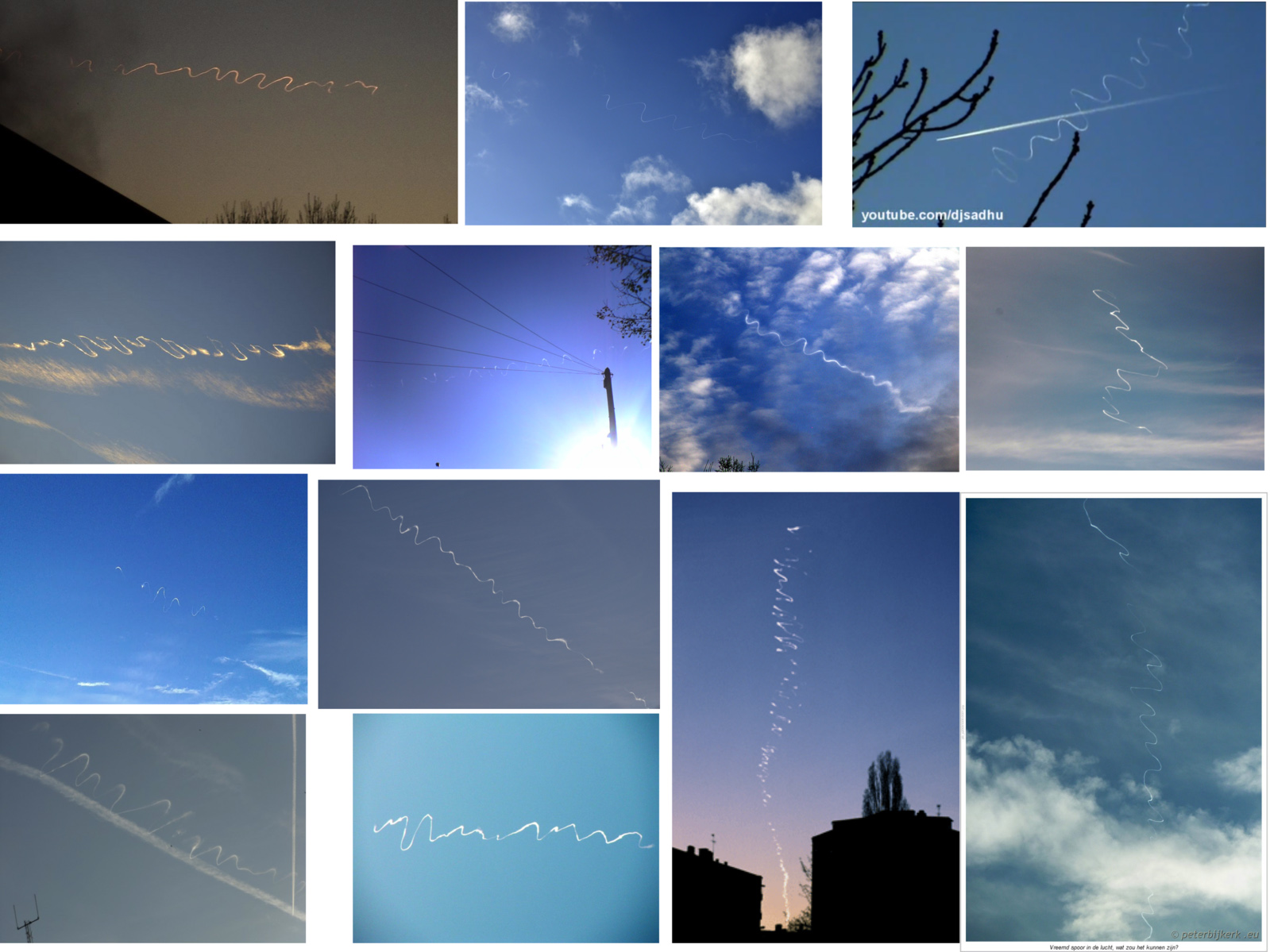
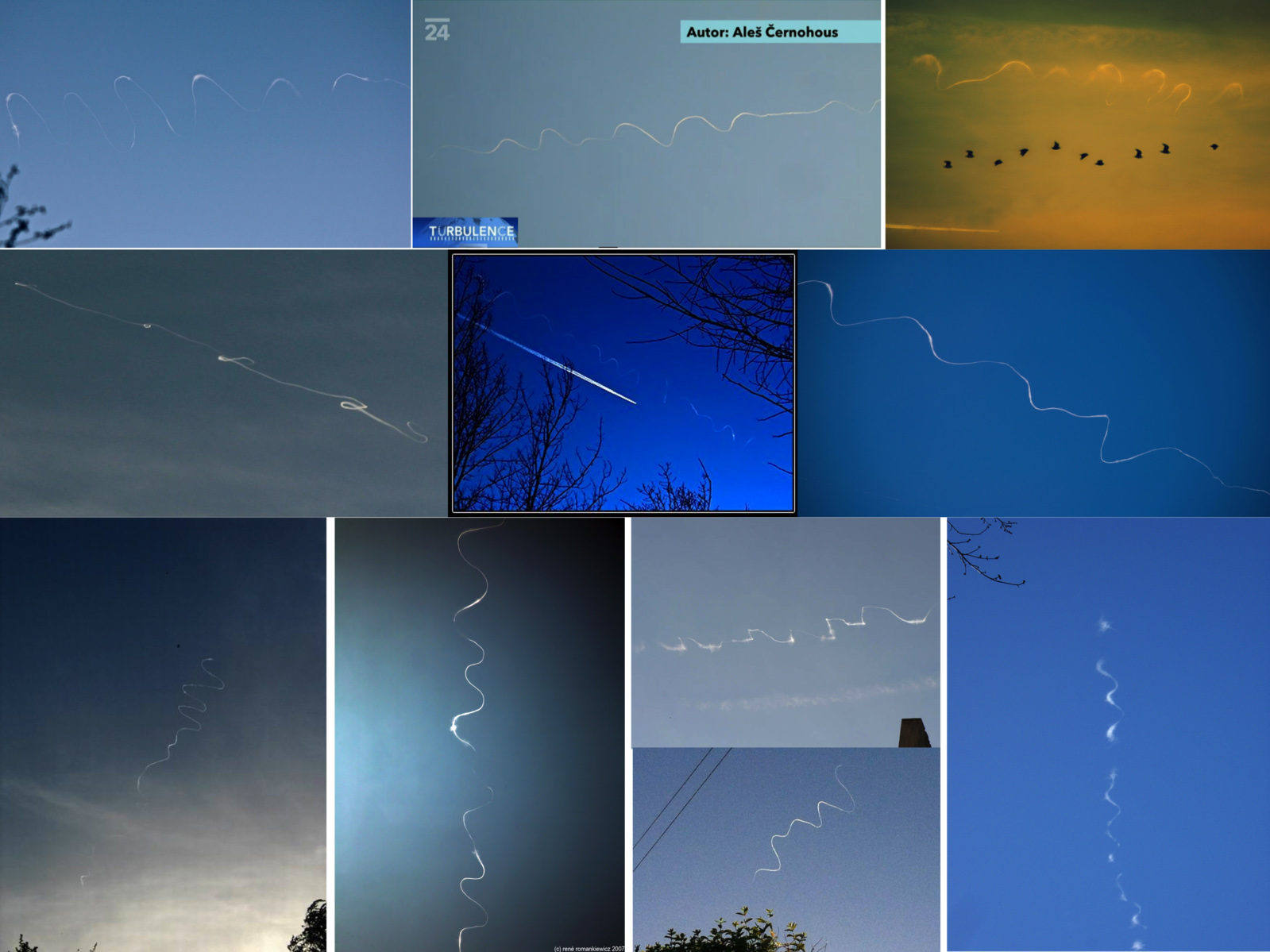
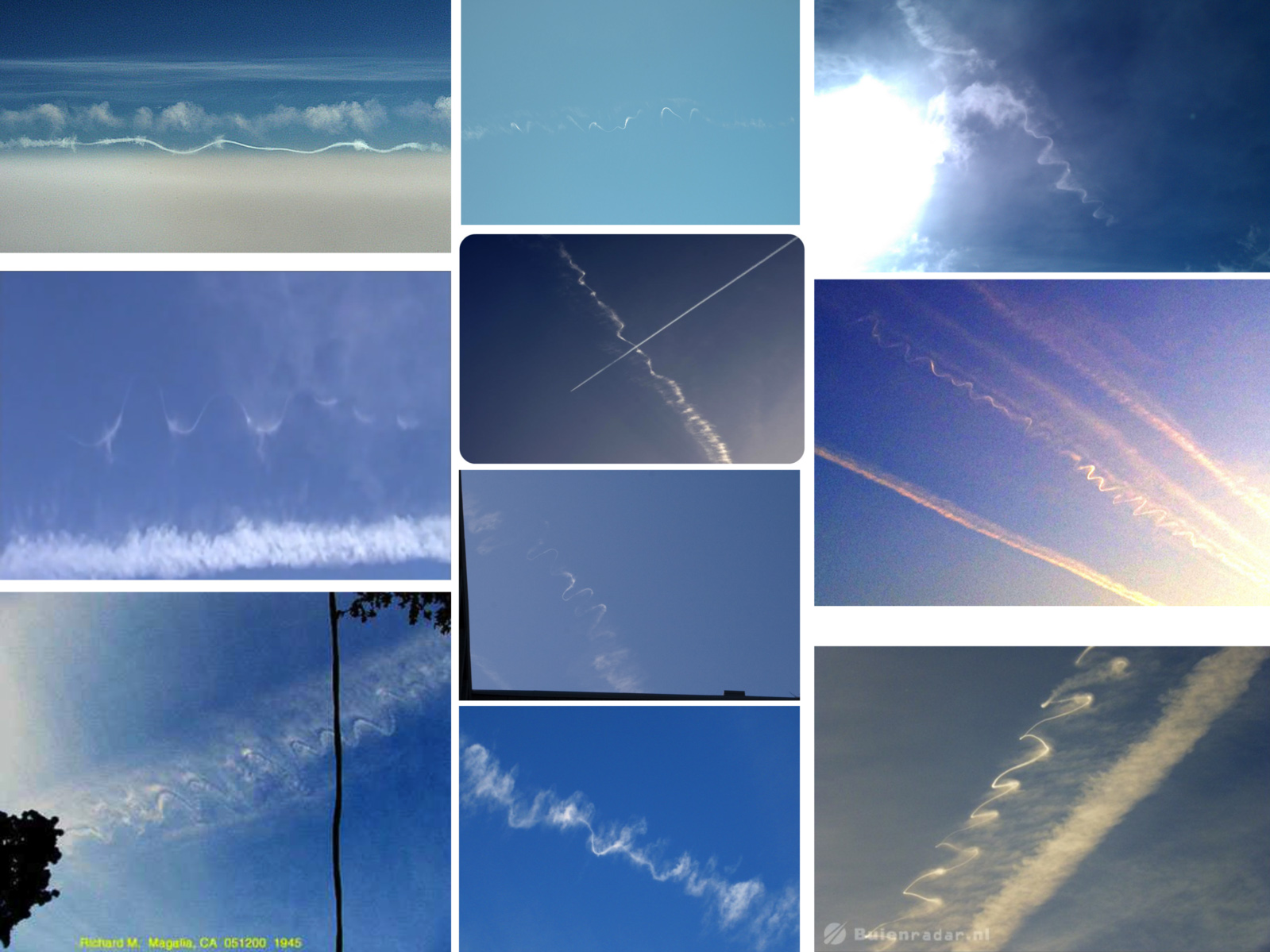
These numerous examples show that sinusoidal thin contrails are not a freak event but a recurrent albeit rare phenomenon. They are exactly what they look like - solitary hybrid contrails. Hybrid contrails are (parts of) exhaust contrails entrained in the wing tip vortices: http://contrailscience.com/hybrid-contrails-a-new-classification/. Normally, hybrid contrails come in pairs, like the vortices themselves. They are formed in a narrow range of RH and usually observed behind large planes that create stronger wake vortices, e.g., Boeing 747. The lifetime of a hybrid contrail pair is limited by the Crow instability (http://en.wikipedia.org/wiki/Crow_instability) that breaks down a pair of counter rotating vortices. Formation of solitary hybrid contrails apparently occurs in the same range of RH but additionally requires some form of atmospheric turbulence capable of decoupling the vortex pair. Solitary vortices can have a longer lifetime, therefore solitary hybrid contrails can persist, unlike a hybrid contrail pair.
There are instabilities in solitary vortices causing vortex meandering, a phenomenon which has been observed in experimental studies of airfoil tip vortices in wind tunnels.
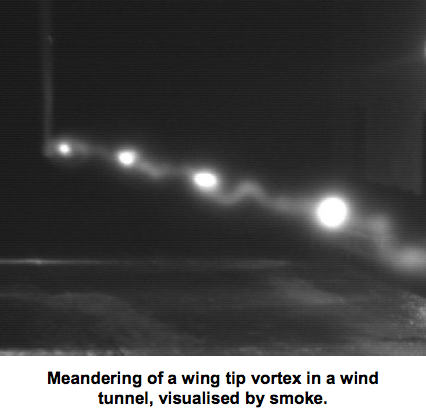
Solitary hybrid contrails display similar behaviour: in the beginning they form fairly straight lines and then transform into meandering shapes of gradually increasing amplitude. This phenomenon yet awaits its researcher, but the underlying causes are likely to be the same or similar to the causes of the Crow instability: an ambient turbulence and self induction of a vortex with itself. Playing on the name of its discoverer, I propose the name for the solitary vortex instability: the 'Rook' instability. Rook is a bird of the corvid family; the juvenile rook is similar to carrion crow, whereas their adults are readily distinguishable.
Alternative explanation of the sinusoidal shape, as suggested in several discussions of individual occurrences of solitary thin contrails, is their perturbation by atmospheric waves. This explanation however can be ruled out by the observations of a sinusoidal thin contrail coexisting with an ordinary exhaust contrail from the same plane which is not perturbed (see the last gallery above).
Below is a published account of one of the observation (from onlinelibrary.wiley.com/doi/10.1256/wea.266.05/pdf)
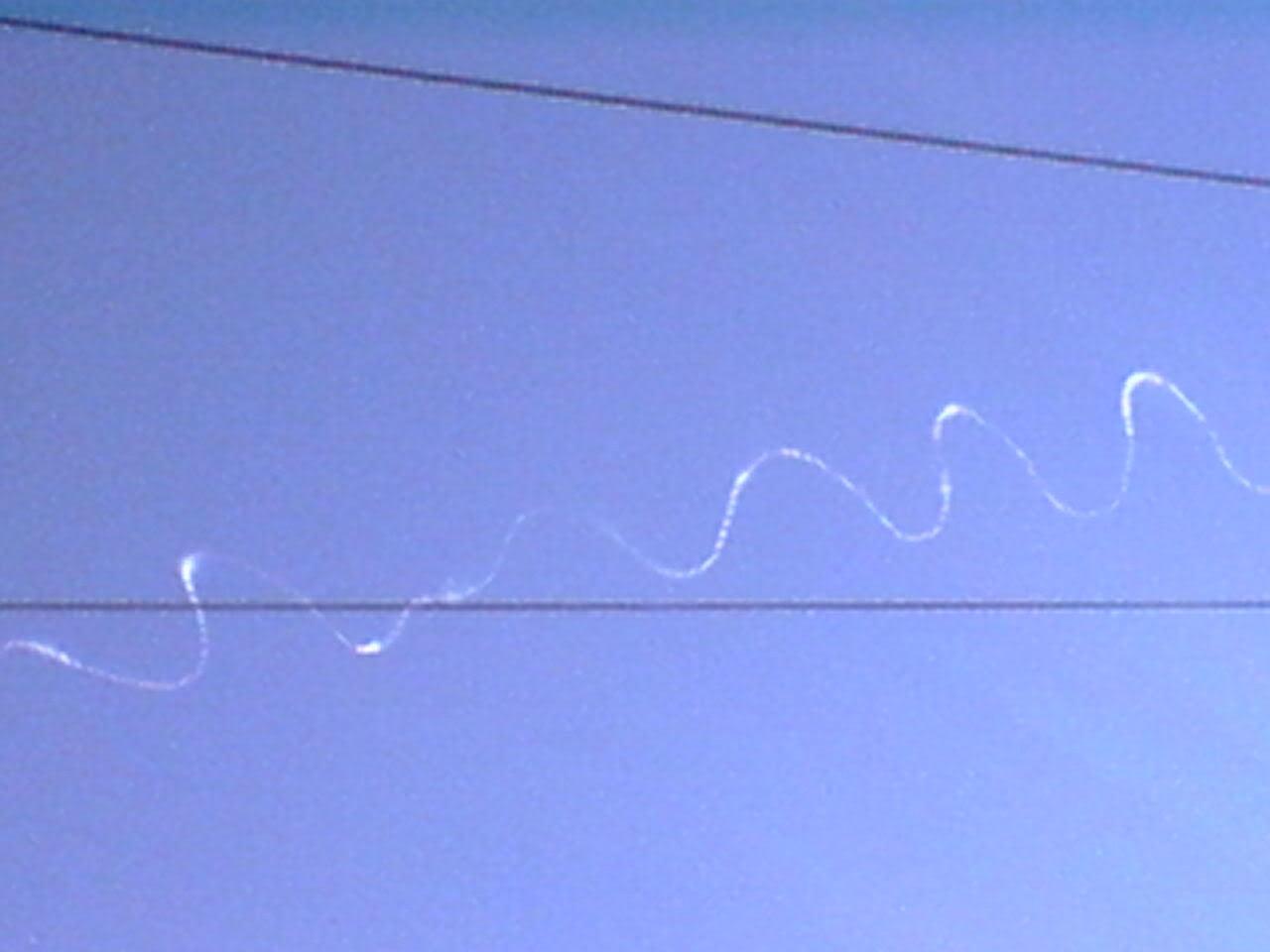
http://www.forteantimes.com/forum/viewtopic.php?t=24312
Below are a few examples of 'newborn' solitary hybrid contrails:
right behind the plane (like in the above description):
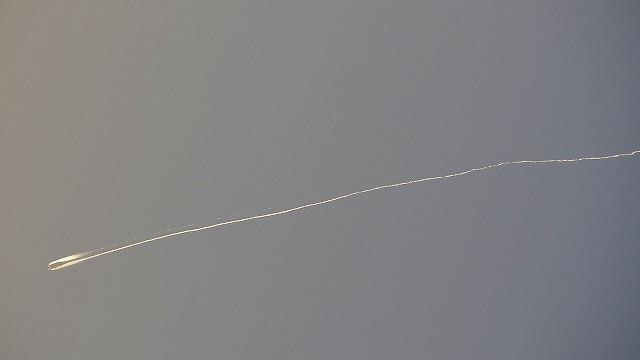
at the end of a typical double stranded hybrid contrail:
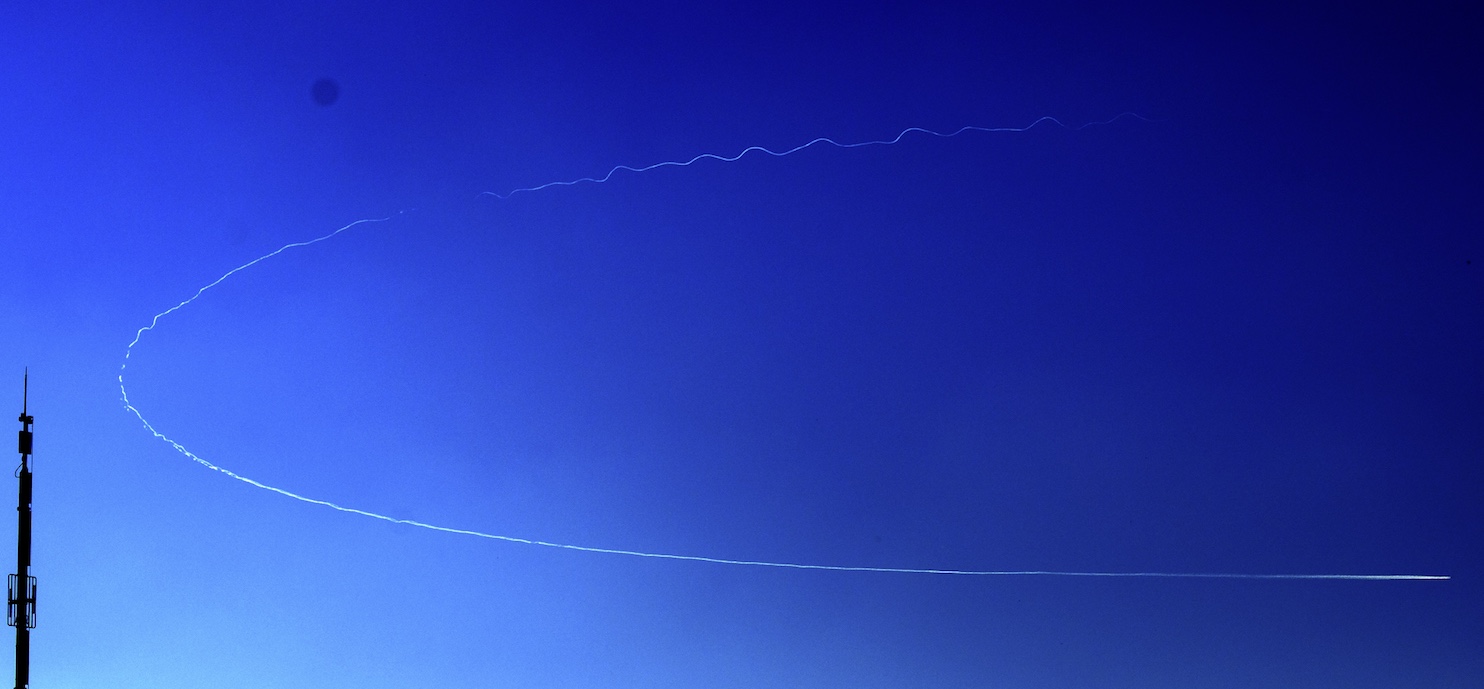
Full Size: https://www.metabunk.org/data/MetaMirrorCache/39a379cd272be87788ddb6b0248b297e._.jpg
and (taken by some guy from Santa Monica)

http://contrailscience.com/contrail-of-the-day/
detached from the rest of contrail:
followed by evolution of the detached segment:
Solitary hybrid contrails compared to ordinary hybrid and exhaust contrails of similar ages:
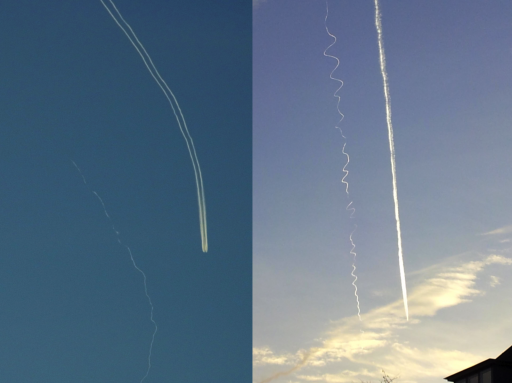
Solitary hybrid contrails in 3D
In at least two cases, the solitary hybrid contrails have been observed from different locations and photographed at about the same time. Using these photographs I have reconstructed the contrails' shapes in the form of pseudo stereo images:
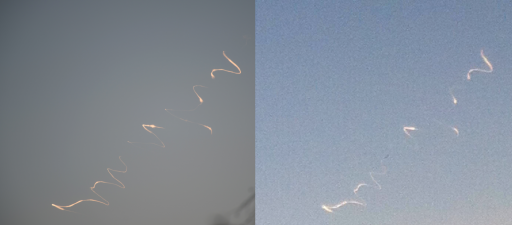
Rotterdam, February 18, 2013
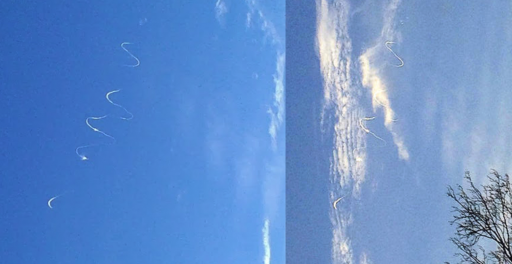
Göttingen, January 22, 2014
Neither of these two contrails lays in one plane. Both consist of a number of irregular helical turns, the shapes of which resemble a stretched paperclip rather than a coil spring. Viewed at some angles, such irregular helical shapes may look very different from a sine curve, like, for example:
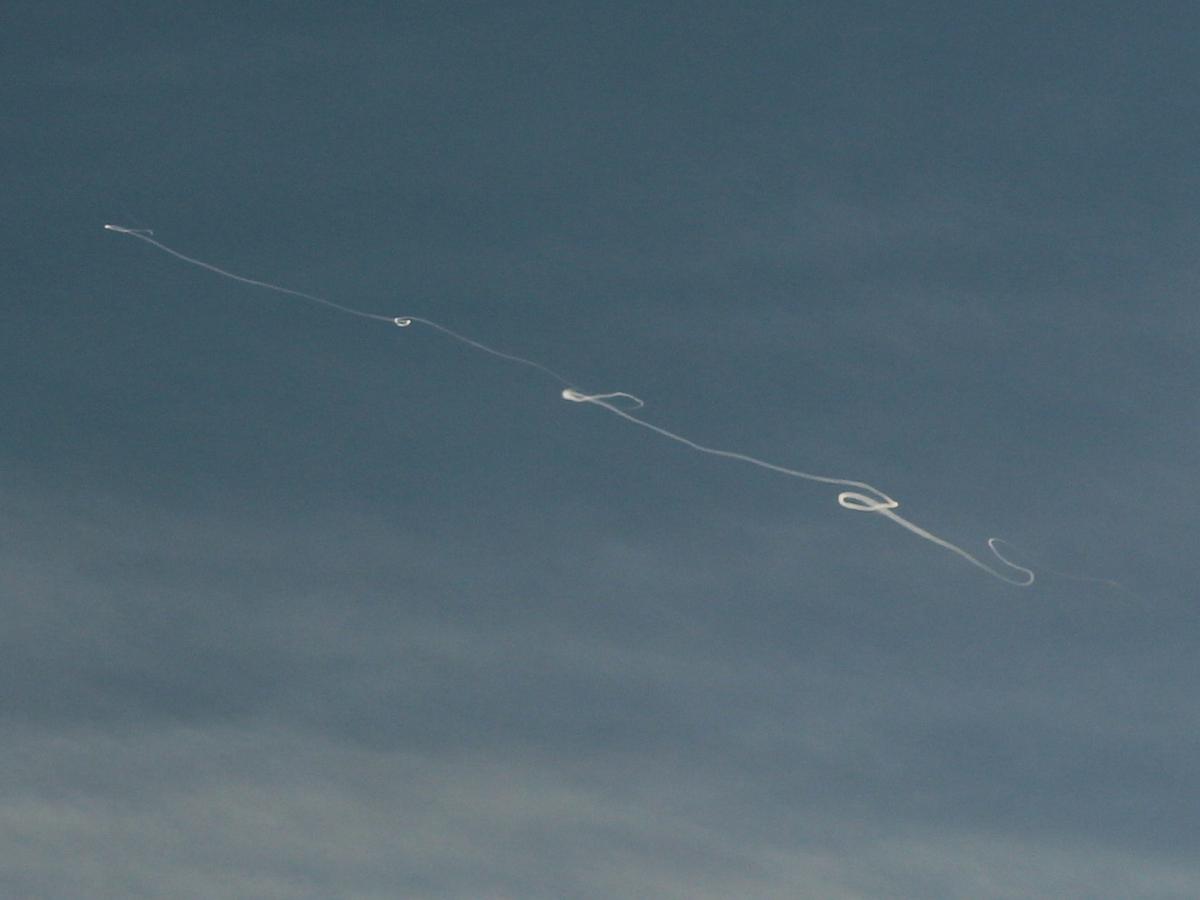
and
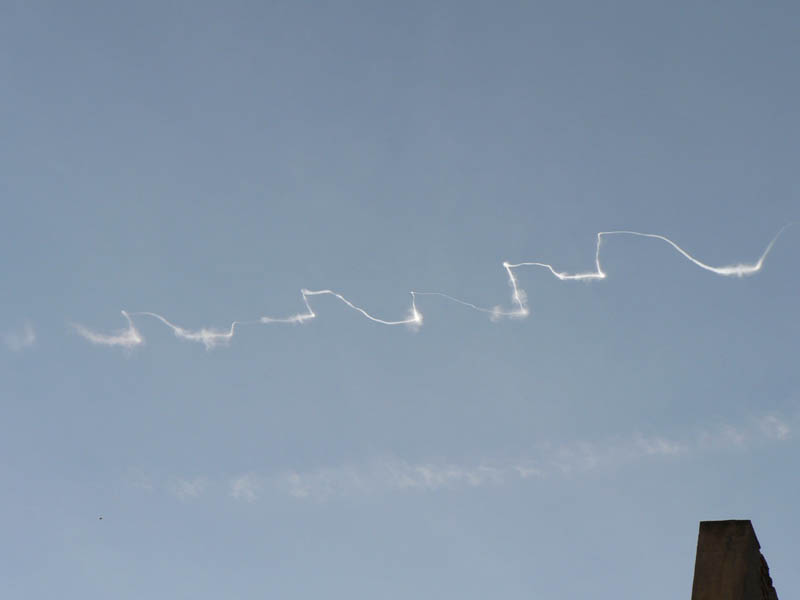
Appeal to the readers:
A solitary hybrid contrail is a very rare phenomenon. Therefore, if you happen to see one, please observe it thoroughly. Please note the time and place of observation and report it here asap. This would help the identification of atmospheric conditions as well as the types of planes and would facilitate further research of this phenomenon.
In the above thread there are seven in total different occurrences of these highly unusual contrails captured on photo or video. I have trawled Google Images, flickr and youtube to find more reported occurrences and raised the total to more than 60 cases spanning over the past 15 years. One example has already made to the Wikipedia article on Contrail (English and Polish versions).
Sinuous vapor trail over south-east Poland.
Here is a selection of observed thin contrails (in three galleries):



These numerous examples show that sinusoidal thin contrails are not a freak event but a recurrent albeit rare phenomenon. They are exactly what they look like - solitary hybrid contrails. Hybrid contrails are (parts of) exhaust contrails entrained in the wing tip vortices: http://contrailscience.com/hybrid-contrails-a-new-classification/. Normally, hybrid contrails come in pairs, like the vortices themselves. They are formed in a narrow range of RH and usually observed behind large planes that create stronger wake vortices, e.g., Boeing 747. The lifetime of a hybrid contrail pair is limited by the Crow instability (http://en.wikipedia.org/wiki/Crow_instability) that breaks down a pair of counter rotating vortices. Formation of solitary hybrid contrails apparently occurs in the same range of RH but additionally requires some form of atmospheric turbulence capable of decoupling the vortex pair. Solitary vortices can have a longer lifetime, therefore solitary hybrid contrails can persist, unlike a hybrid contrail pair.
There are instabilities in solitary vortices causing vortex meandering, a phenomenon which has been observed in experimental studies of airfoil tip vortices in wind tunnels.

Solitary hybrid contrails display similar behaviour: in the beginning they form fairly straight lines and then transform into meandering shapes of gradually increasing amplitude. This phenomenon yet awaits its researcher, but the underlying causes are likely to be the same or similar to the causes of the Crow instability: an ambient turbulence and self induction of a vortex with itself. Playing on the name of its discoverer, I propose the name for the solitary vortex instability: the 'Rook' instability. Rook is a bird of the corvid family; the juvenile rook is similar to carrion crow, whereas their adults are readily distinguishable.
Alternative explanation of the sinusoidal shape, as suggested in several discussions of individual occurrences of solitary thin contrails, is their perturbation by atmospheric waves. This explanation however can be ruled out by the observations of a sinusoidal thin contrail coexisting with an ordinary exhaust contrail from the same plane which is not perturbed (see the last gallery above).
Below is a published account of one of the observation (from onlinelibrary.wiley.com/doi/10.1256/wea.266.05/pdf)
More pictures of the above contrail are available at this link:
Contrail contortions
I wonder if any of your readers are able to offer an explanation for the unusual behaviour of an aircraft contrail that I observed a few days ago?
On 19 November 2005, at exactly noon, I noticed the contrail of a large twin-engined jet, most likely a Boeing 777 or an Airbus A330, heading eastwards over my home in Reading (and then Heathrow), at high altitude. Judging by other aircraft contrails that it crossed, I would guess it to be at about 27 000 to 30 000 ft (8000 to 9000 m) as other craft were certainly higher. The weather at ground level was dead calm, frosty and sunny.
What drew my attention initially to this aircraft was that it produced two distinctly separate contrails, that from the port engine having the usual puffy diffuse appearance, while the starboard trail apparently formed a very tight vortex, which initially drew a razor sharp line behind the starboard engine, only slightly offset towards the wingtip. The port contrail dispersed and disappeared within about 30 seconds (say 5 km behind the plane), while the starboard contrail was highly persistent, lasting over 10 minutes before finally disappearing without spreading at all. However, the most noticeable feature after the first minute was the slow formation of highly pronounced sinuous contortions, as clearly shown in Fig 1(a). It was hard to judge the alignment of the contortions, or even whether they were in a single plane, though they were certainly not helical, and not obviously rotating as in a vortex. Mostly the contrail itself persisted as a very thin, sharply defined line, but at just a few places there were anomalies looking like stray tufts of wool from a homespun thread Fig 1(b). These did not rotate even though they looked funnel shaped.
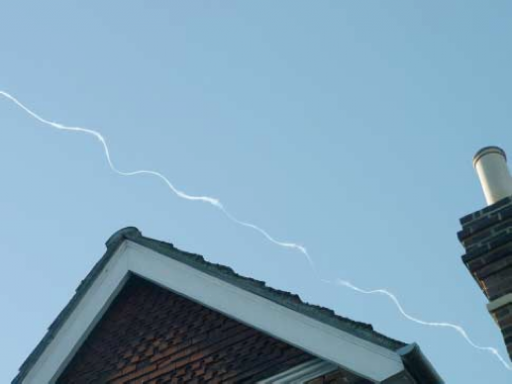
Unfortunately, I was too slow fetching my camera to be able to capture the early stages of the phenomenon, while there were still two contrails, but I was easily able to photograph the latter stages (Fuji Finepix 2800 digital camera mainly on 38mm zoom, but with some at 4 to 6 times zoom). Although I watched another 20 or more aircraft contrails during the following hour, none of them showed any similarly unusual behaviour.
I would be most interested to hear if anyone else has made similar observations, or can explain the phenomenon.
David Whipple
Reading, Berkshire

http://www.forteantimes.com/forum/viewtopic.php?t=24312
Below are a few examples of 'newborn' solitary hybrid contrails:
right behind the plane (like in the above description):

at the end of a typical double stranded hybrid contrail:

Full Size: https://www.metabunk.org/data/MetaMirrorCache/39a379cd272be87788ddb6b0248b297e._.jpg
and (taken by some guy from Santa Monica)
http://contrailscience.com/contrail-of-the-day/
detached from the rest of contrail:
followed by evolution of the detached segment:
Solitary hybrid contrails compared to ordinary hybrid and exhaust contrails of similar ages:

Solitary hybrid contrails in 3D
In at least two cases, the solitary hybrid contrails have been observed from different locations and photographed at about the same time. Using these photographs I have reconstructed the contrails' shapes in the form of pseudo stereo images:

Rotterdam, February 18, 2013

Göttingen, January 22, 2014
Neither of these two contrails lays in one plane. Both consist of a number of irregular helical turns, the shapes of which resemble a stretched paperclip rather than a coil spring. Viewed at some angles, such irregular helical shapes may look very different from a sine curve, like, for example:

and

Appeal to the readers:
A solitary hybrid contrail is a very rare phenomenon. Therefore, if you happen to see one, please observe it thoroughly. Please note the time and place of observation and report it here asap. This would help the identification of atmospheric conditions as well as the types of planes and would facilitate further research of this phenomenon.
Last edited by a moderator:

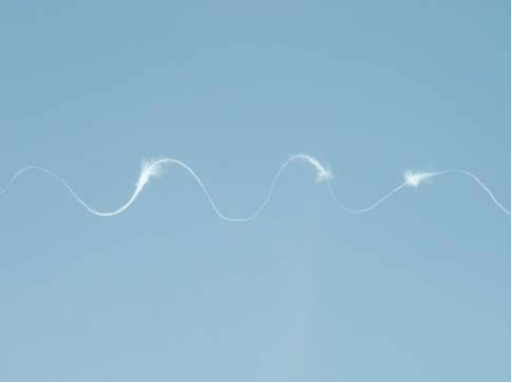
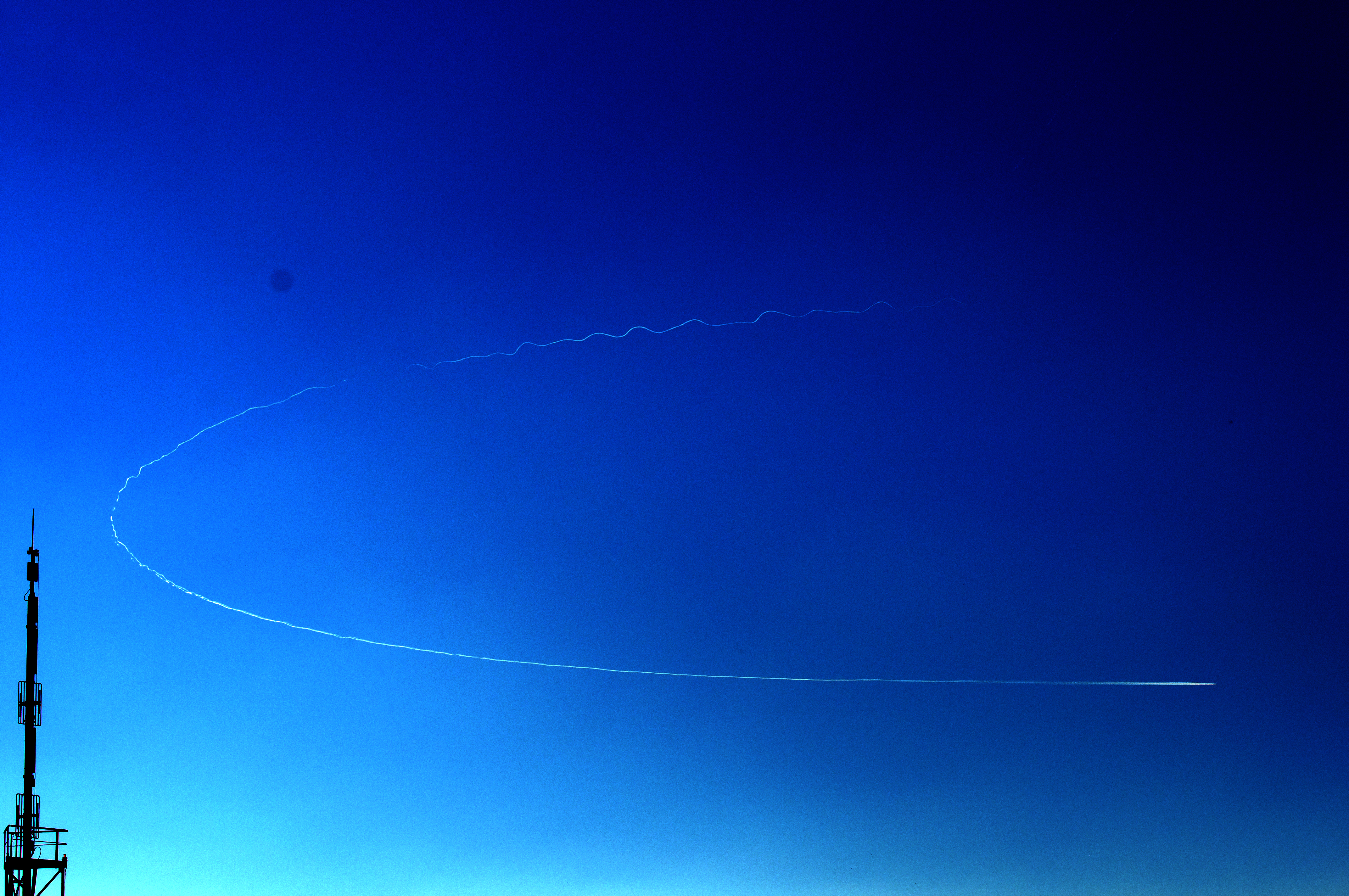
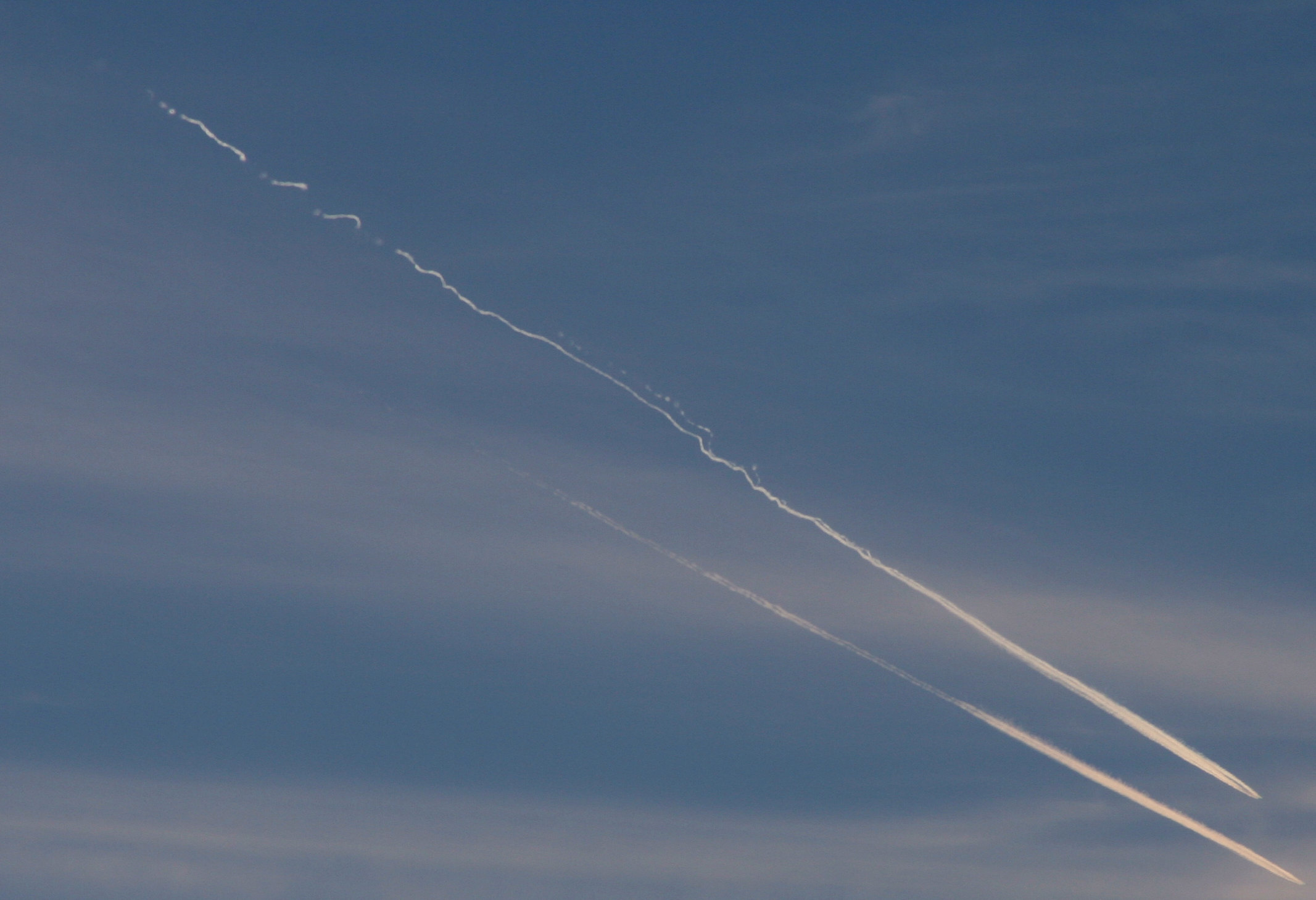
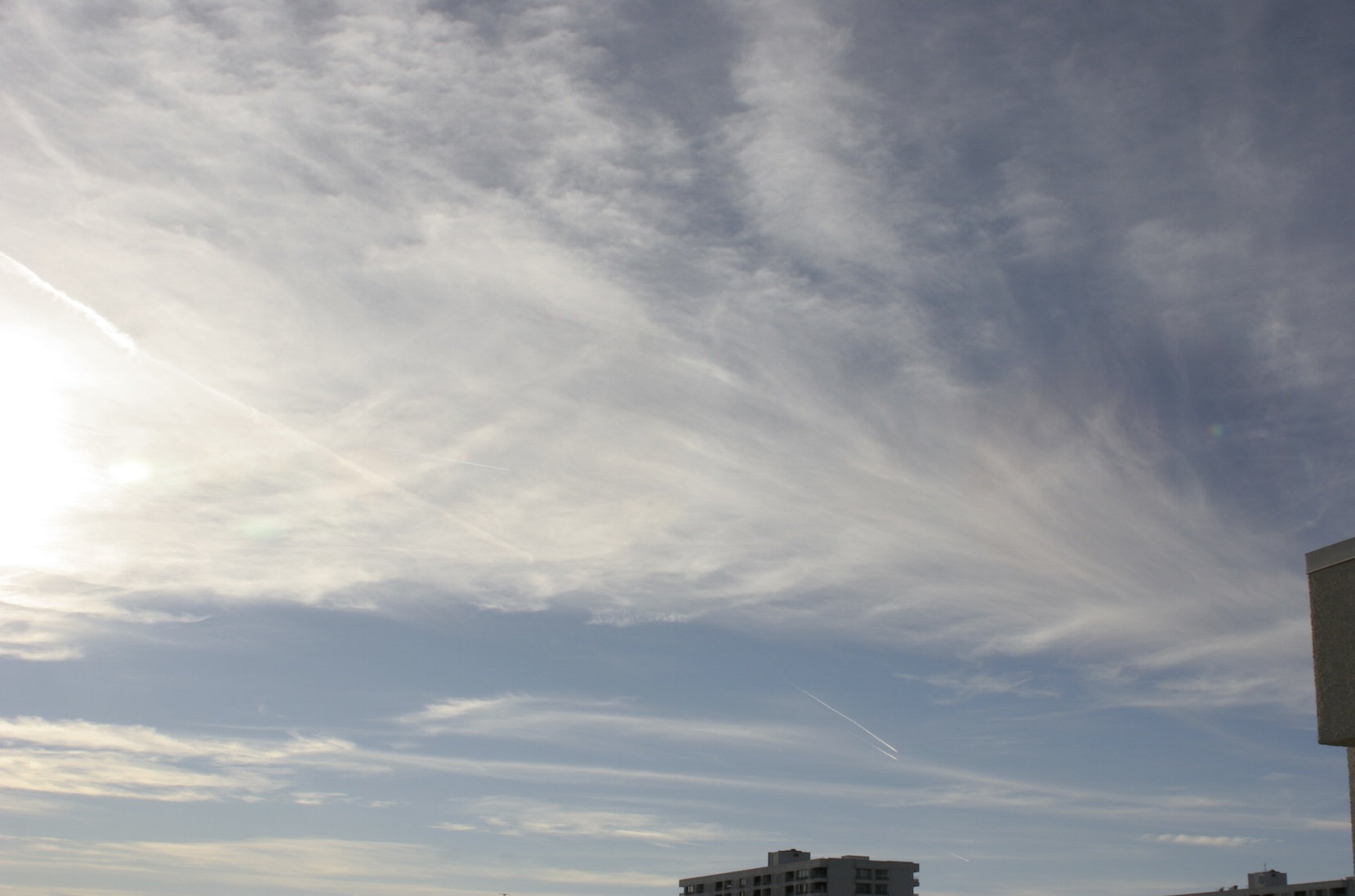
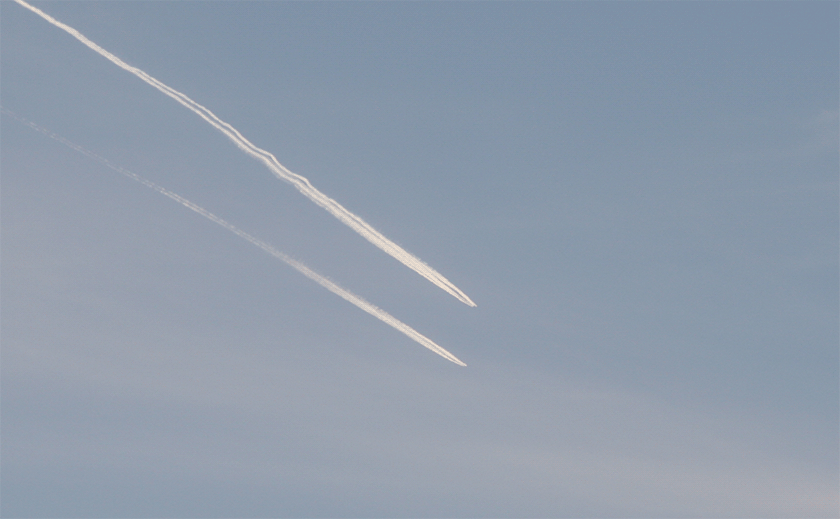
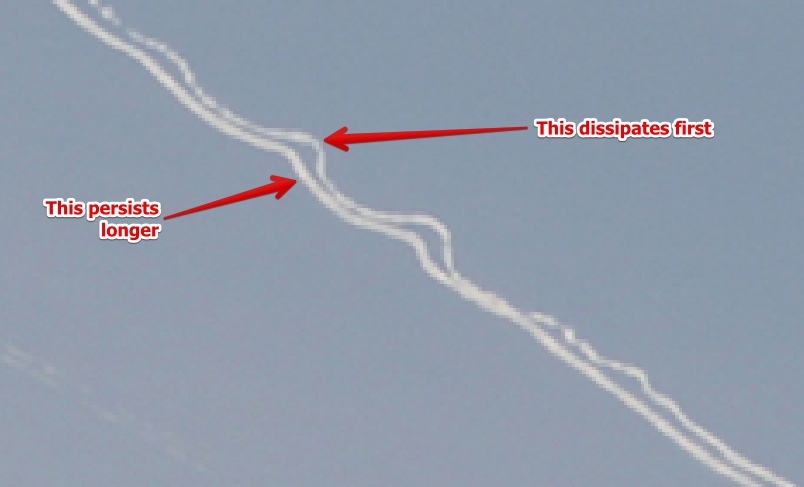

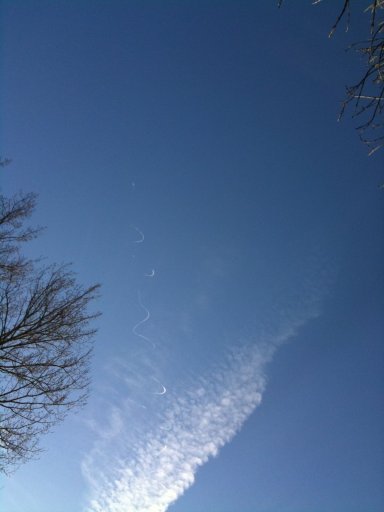
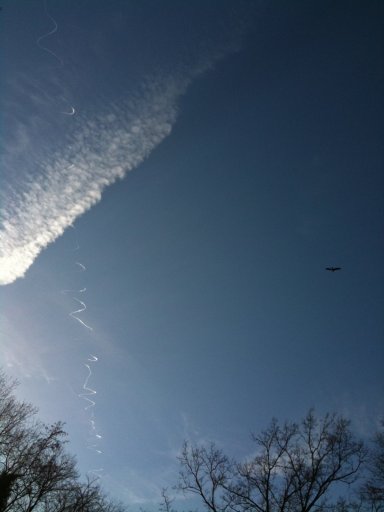
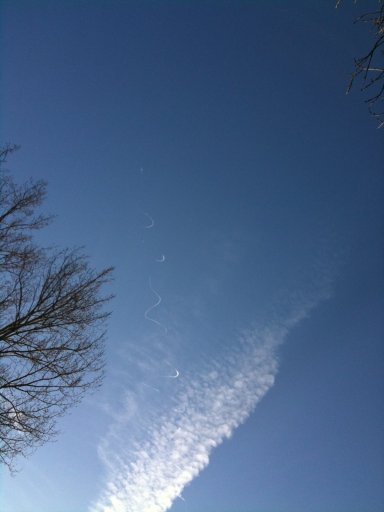
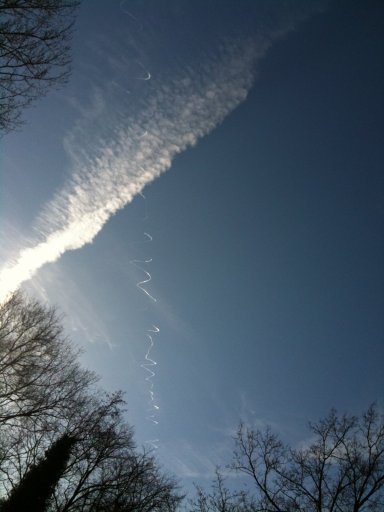
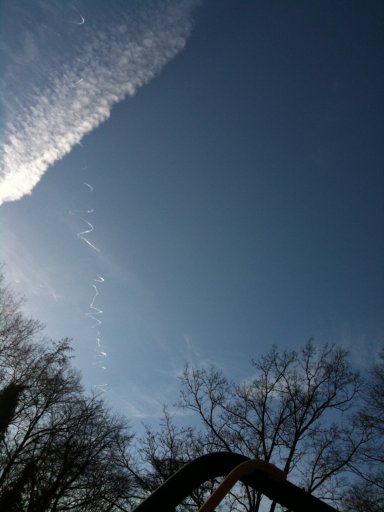
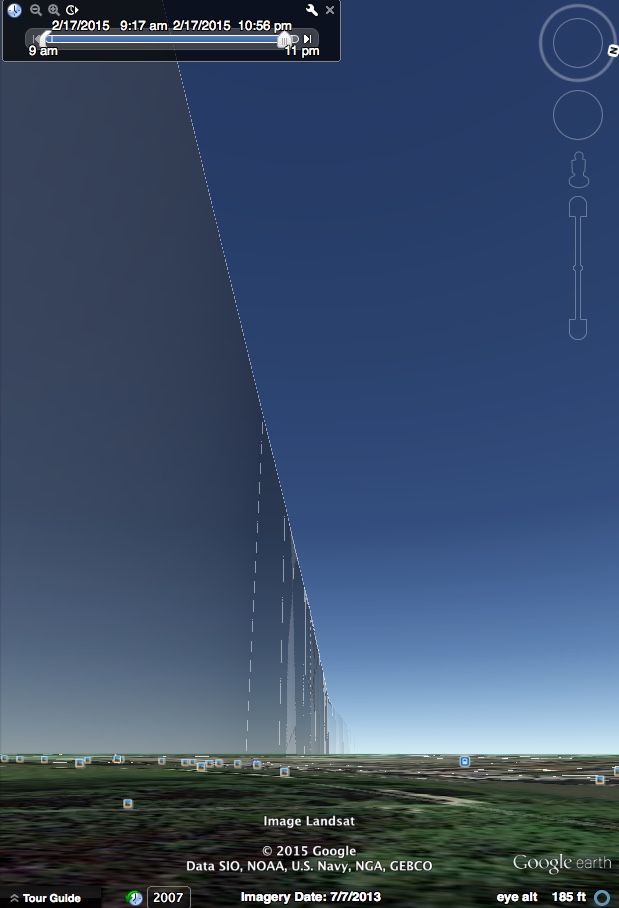
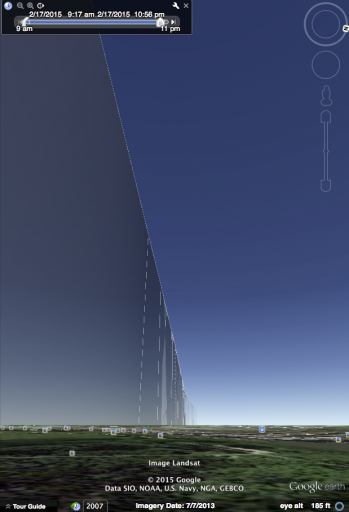
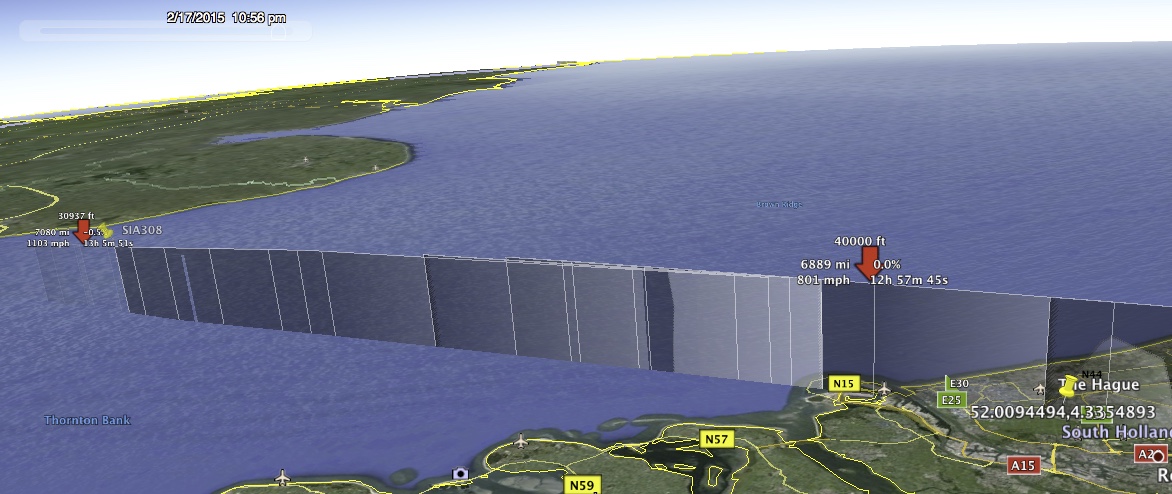
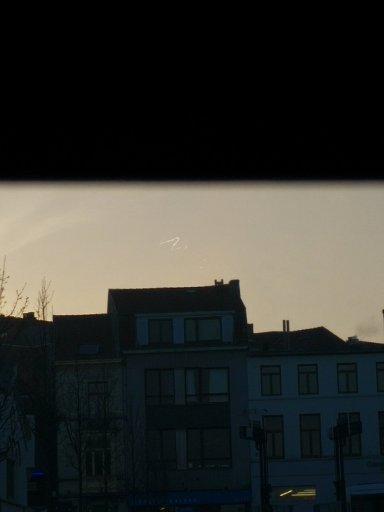
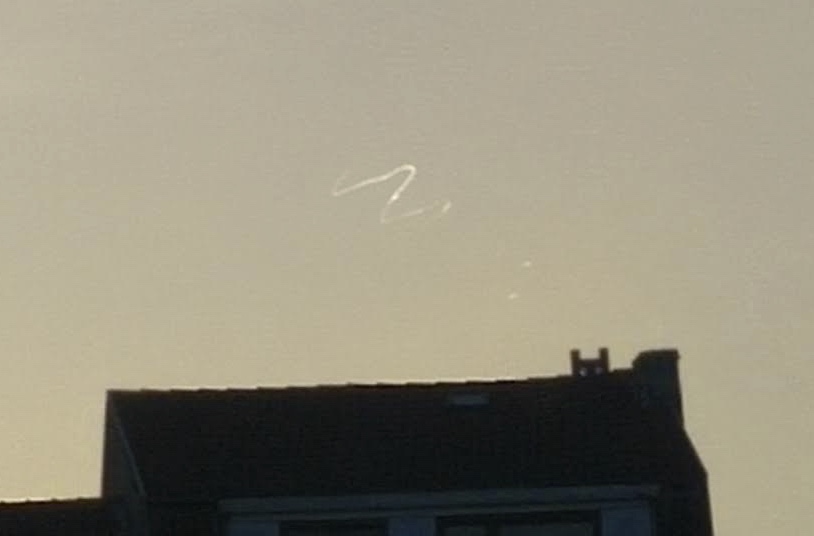
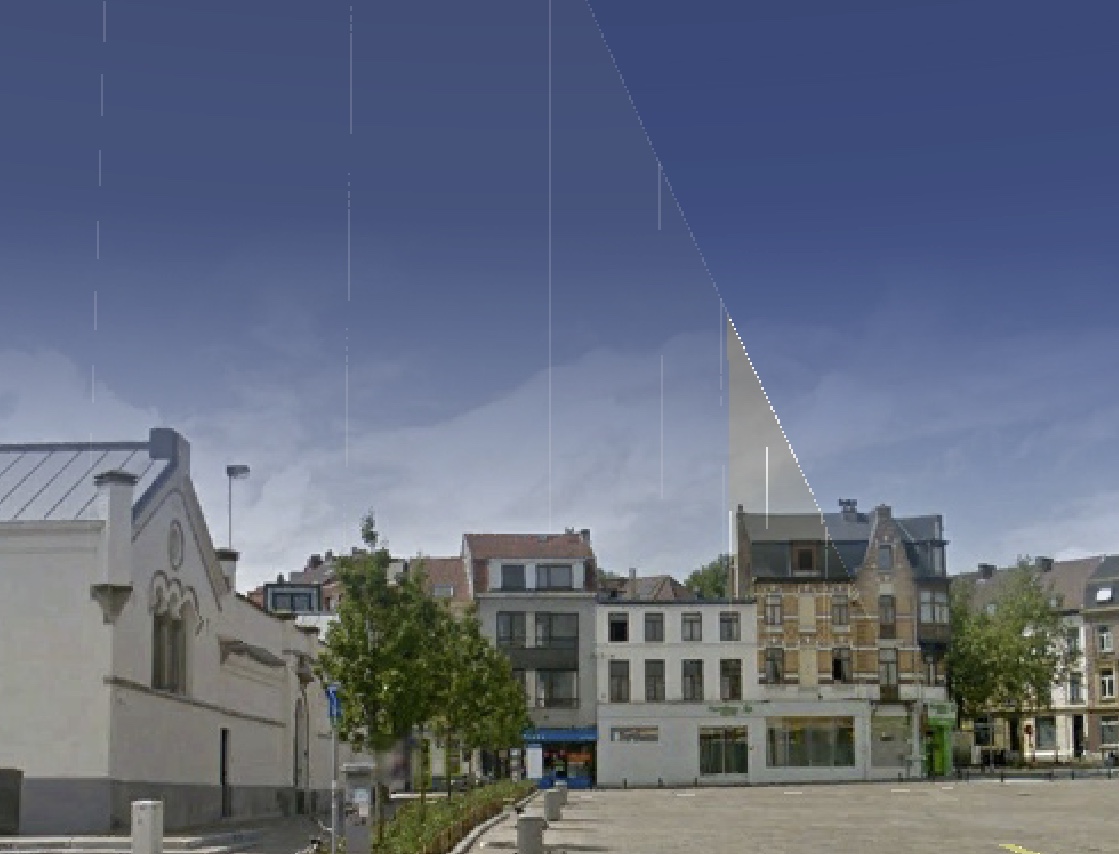
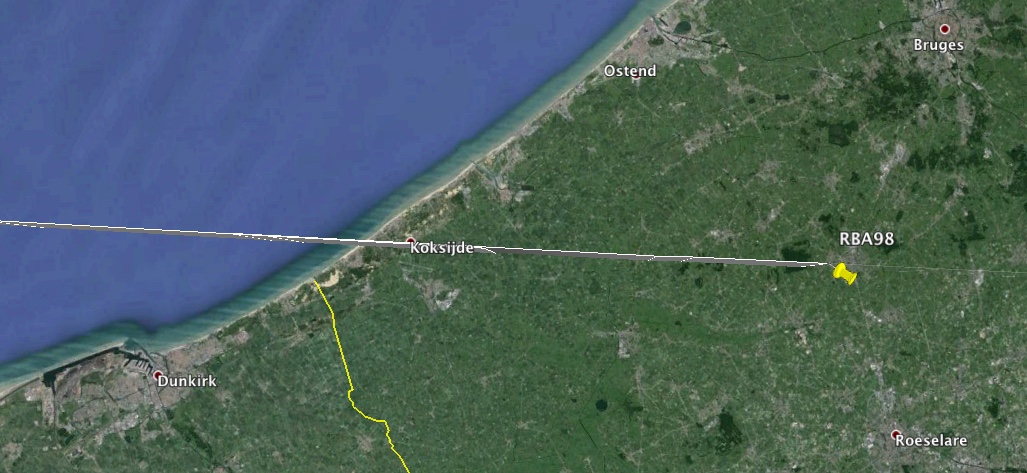
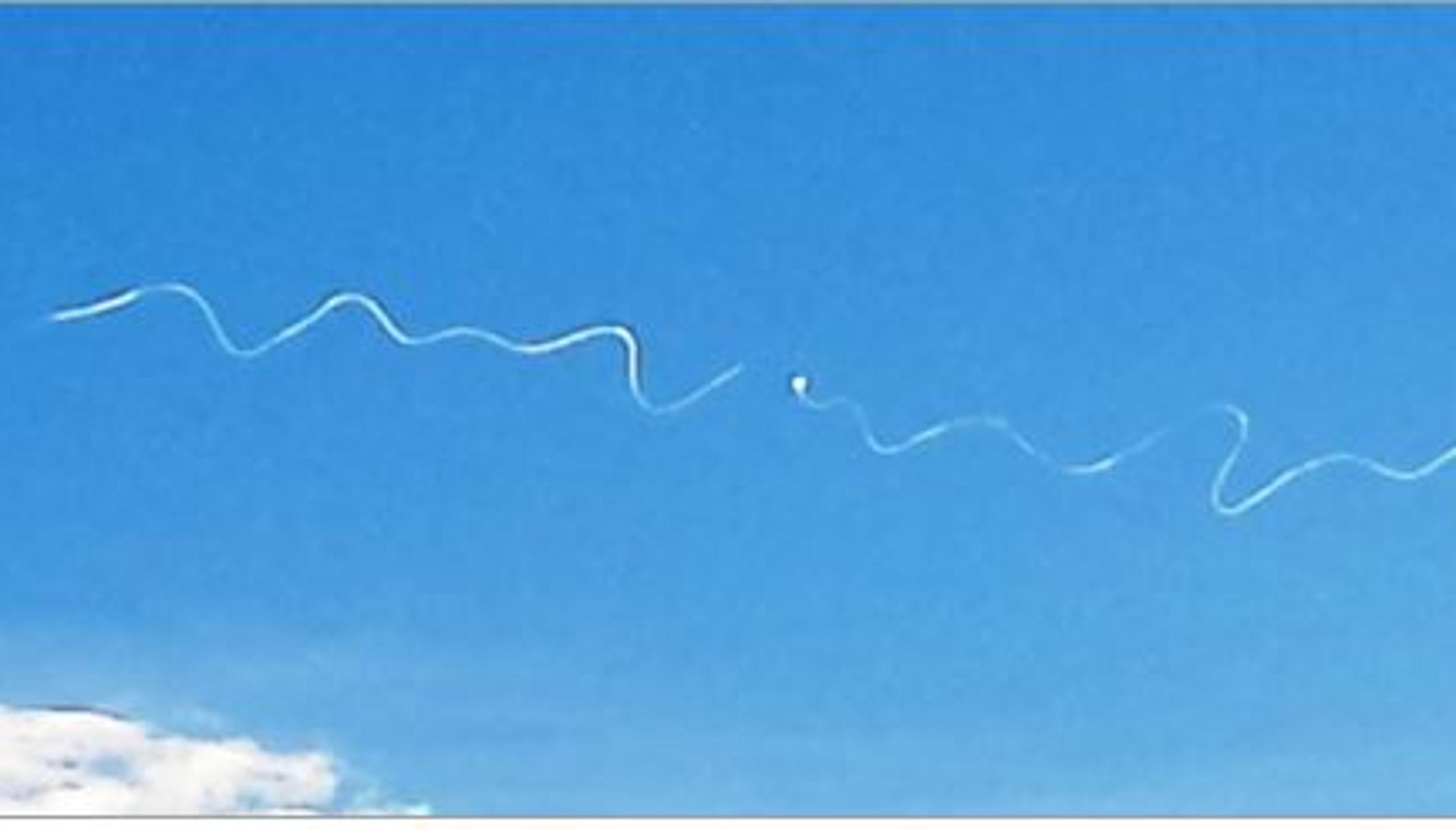
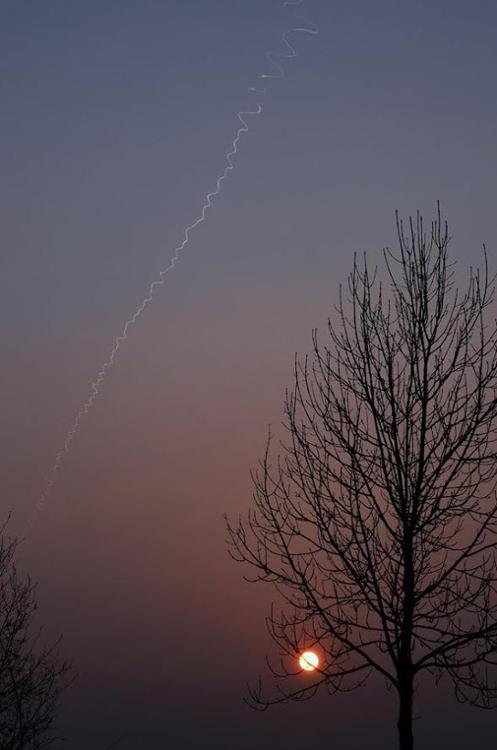
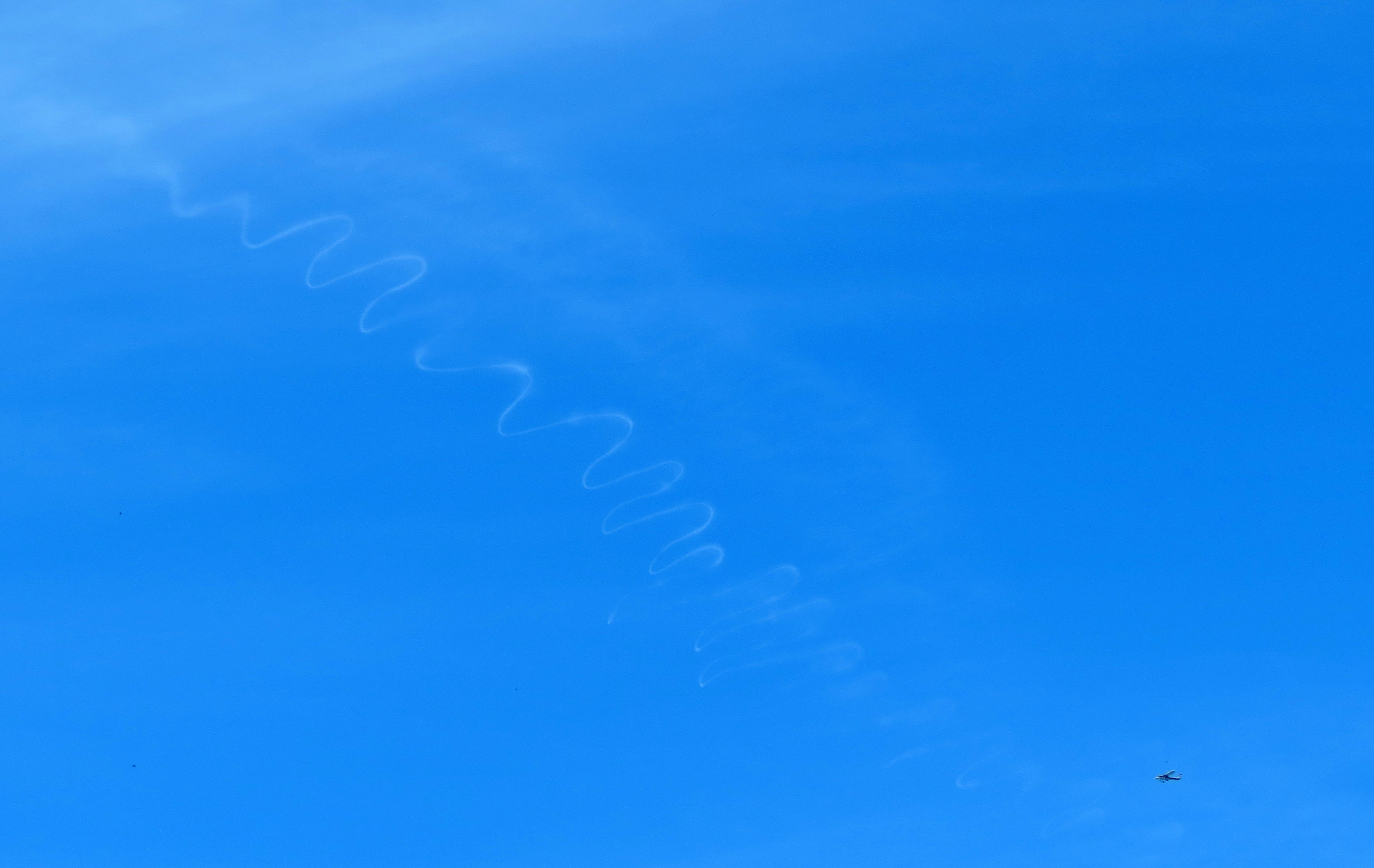 Solitary hybrid contrails; the 'Rook' instability
Solitary hybrid contrails; the 'Rook' instability